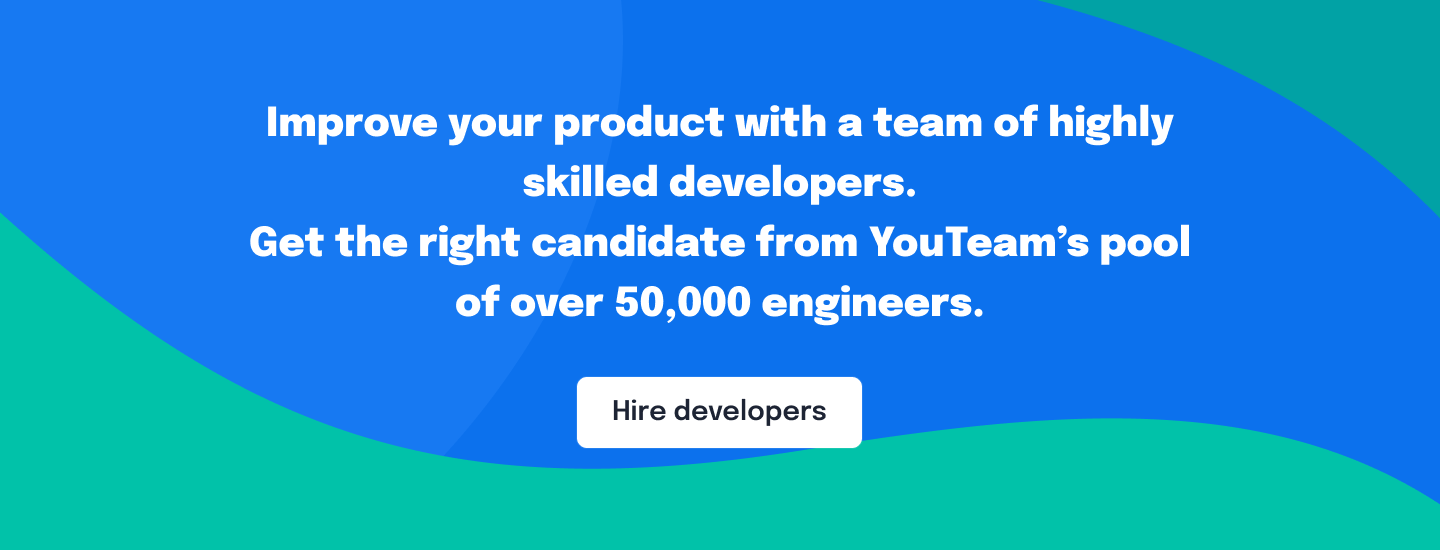There’s no doubt about it. Programming has long been an attractive career. It pays well. You can create new and unique things. And you can work from anywhere in the world.
Couple that with emerging technology and the growth of remote work since the pandemic, and interest in software developer careers won’t slow down anytime soon.
Among the thousands, Java is one of the most popular programming languages, with almost a third of programmers using it.
Why? Java is a universal language that can develop everything from cloud-based, mobile, and scientific applications to video games. But its primary use case has always been web development.
In this article, we’ll discuss the uses of the most popular Java frameworks, the reasons behind their popularity, and their various uses.
What Makes a Framework Popular?
There isn’t a good or bad framework, just like there isn’t a good or bad programming language. Each framework has its advantages and is beneficial in specific situations.
For instance, Spring is excellent at developing enterprise-grade applications. Meanwhile, some developers consider Wicket a better option for smaller projects. Why? It’s easier to maintain complex web applications.
Several factors impact a framework’s popularity. Ease of use has always been an important aspect, as this is what attracts rookie developers. On the other hand, this aspect is also crucial for companies looking to switch to another framework.
While some popular frameworks might be efficient and fast, their poor documentation or the lack of community can be a deal-breaker for many companies and individuals.
Its alignment with contemporary concerns, such as data center sustainability, can also influence a framework’s popularity. Many companies seek frameworks for optimizing resource usage, directly influencing the environmental impact of data centers.
This way, large-scale projects won’t only benefit your project and company, but you’ll also do what’s in your power for ecological causes.
Java frameworks promote code reusability, allowing developers to employ existing solutions and functionalities, improving their productivity, and reducing the chances of bugs.
7 Popular Java Frameworks in 2024
Without further ado, let’s dive into some popular Java frameworks and why they stand above the rest.
Table of Contents
1. Spring
Suitable for projects of all sizes, Spring is definitely one of the most popular Java frameworks. It’s piqued the interest of large companies such as eBay and Netflix and has an active community of developers.
This quick and lightweight framework allows you to develop applications requiring high concurrency and low latency. Spring supports applications and listeners, type-safe configuration, and YAML.
A strong feature of Spring is the Inversion of Control (IoC) container, which is a software design principle that allows you to manage Java objects (beans) more easily and makes the code much more readable.
Spring MVC and Spring Boot are extensions of the Spring framework, which bring a whole new array of capabilities. Spring is an excellent option if you’re looking to develop advanced online applications with a growing user base.
Another important extension is Spring Security, which comes with security features that allow you to implement authentication, authorization, and protection against common exploits on your web applications.
Spring can be a little tougher for beginner programmers as it has a steep learning curve. Without Spring Boot, you’ll have to write a lot of boilerplate code, but other than that, this framework deserves its popularity and respect.
2. Hibernate
There isn’t a perfect computer language. But thankfully, there are brilliant programmers who’ll find solutions for certain shortcomings of each.
Since Java is an object-oriented (OO) programming language, a common mistake that occurs during development is called a paradigm mismatch. The full name of the problem is Object-Relational Impedance Mismatch, and Hibernate is often the solution for it.
Hibernate provides a way to map objects to database tables and handle CRUD operations (Create, Read, Update, Delete) in a way that allows you to leverage the power of relational databases.
Hibernate is helpful when relying on data manipulation and complex databases. Some key features include:
- A powerful caching mechanism that improves the application’s performance
- ORM capabilities
- HQL
Many popular financial institutions, such as Ernst & Young, JP Morgan Chase & Co., and New York Life Insurance, use Hibernate for their systems.
3. Struts
Apache is the world’s largest open-source foundation, and Struts is a full-featured framework for Java that they developed. It’s been around for over 20 years, and many enterprise-level applications are based on it.
However, Apache Struts is best suited for less complex web applications, allowing SMBs to use it to their advantage. Although recommended for simpler applications, this doesn’t prevent you from making anything from a one-page website to sophisticated applications.
Struts employs XML-type files, which streamlines the overall development process. It relies on the Model-View-Controller (MVC) design pattern, which separates an application into three interconnected components.
This framework allows you to manage complexity and organize code to separate internal representations of information from how information is presented to and accepted by the user.
There are some flaws compared to Spring, but it comes with plugins that support RESTful web services, AJAX, JSON, and many others from third-party providers.
You can easily integrate Struts with Spring, Hibernate, and Java EE technologies. The main flaw of Apache Struts is the lack of security mechanisms.
4. Vaadin
The days of static websites are long gone. However, even though many web developers understand this, poorly designed websites still roam the internet.
That’s where Vaadin comes to the rescue. It’s an open-source framework with around 50 pre-designed UI components, allowing you to create beautiful websites and web applications without hassle.
The pre-designed components make it easy to develop a site with little experience in HTML and Javascript. You can access the Document Object Model (DOM) from the Java Virtual Machine, simplifying development for those familiar with Java.
If you’re using frontend frameworks such as React, Angular, or Vue, you can use Vaadin components along with them.
Vaadin allows you to develop your own theme based on its components or use it to integrate its features into your web application using the Vaadin Collaboration Engine. Overall, this framework helps build web applications with straightforward and elegant UI/UX.
However, the framework does have limitations in terms of scalability because of its server-centric architecture. Vaadin also requires you to pay for some of its pro components, tools, and better support.
5. Play
While most Java frameworks are written in Java, Play is an exception. It’s written in Scala. This differentiation allows you to build web-friendly applications on Scala and Java. It’s excellent at developing lightweight applications.
Play allows you to build highly scalable web applications regardless of your intentions. You don’t need more than a text editor and a web browser to develop or make quick changes in the code.
Play is a powerful framework that doesn’t consume too many computer resources. It has various plugins and NoSQL databases and supports Eclipse and IntelliJ IDEA IDEs. It also provides support for cloud-deployment systems such as AWS, making AWS backup a breeze.
A downside for some is that Play doesn’t offer backward compatibility. So, you’ll have to keep up with the new versions of the program. Play 1.x isn’t compatible with versions 2.x, which some consider problematic.
6. Grails
Like Play, Grails has been written in a language that’s not Java. It uses Apache Groovy. You’ll have to write the code for Grails in Groovy. Still, it’s perfectly compatible with Java technologies such as the previously mentioned Hibernate and Spring, the Java Development Kit, and Jakarta EE containers.
It has built-in support for RESTful APIs and simplifies the creation and management of RESTful services, facilitating seamless exchange and data exchange with other systems and services.
An initial obstacle for many is that you have to learn Groovy programming language before you can start working with the Grails framework. However, fantastic documentation, an extensive plugin library, and good community support compensate for that downside.
You can also develop your own plugins if you need them. Grails’ IDE supports:
- IntelliJ IDEA
- Textmate
- Sublime
- Eclipse
7. Wicket
A framework that’s easy to get into is Wicket. It’s a component-oriented framework that allows you to develop great apps using only HTML and Java code. Wicket components are ordinary Java objects, as they’re based on the Plain Old Java Object (POJO) data model.
An advantage of Wicket is that its components come with support for more than 25 international languages, allowing companies operating in multiple regions to develop applications for different markets quickly.
Wicket provides Content Security Policy (CSP) integration, an essential feature in the current security-savvy landscape. There’s no XML configuration since Wicket emphasizes convention over configuration.
Wicket favors sensible defaults and auto-configuration over extensive external configuration files. This approach reduces the reliance on XML files for setting up and configuring applications, which, again, allows developers to focus more on Java code.
Web vs. Cloud Applications: The Role of Java Frameworks
Java frameworks cater to both web and cloud applications. While web apps are accessed through browsers, cloud apps offer more, like downloadable features. Remember, all cloud apps are essentially web apps with extra capabilities.
This distinction is key in choosing the right Java framework, especially considering the heightened need for security in cloud applications, where tools like Cloud Security Posture Management (CSPM) become essential.
Final Thoughts
There isn’t a perfect Java framework. But this list of popular Java frameworks will help you understand why they are so widespread and whether they also cater to your company’s needs.
Choosing the right framework depends on specific project requirements, team expertise, and long-term sustainability considerations, ensuring optimal performance and efficient resource usage.
From LinkedIn to Netflix, some of the world’s biggest corporations use these frameworks, and there’s nothing stopping you from using them to develop your own world-class applications.













